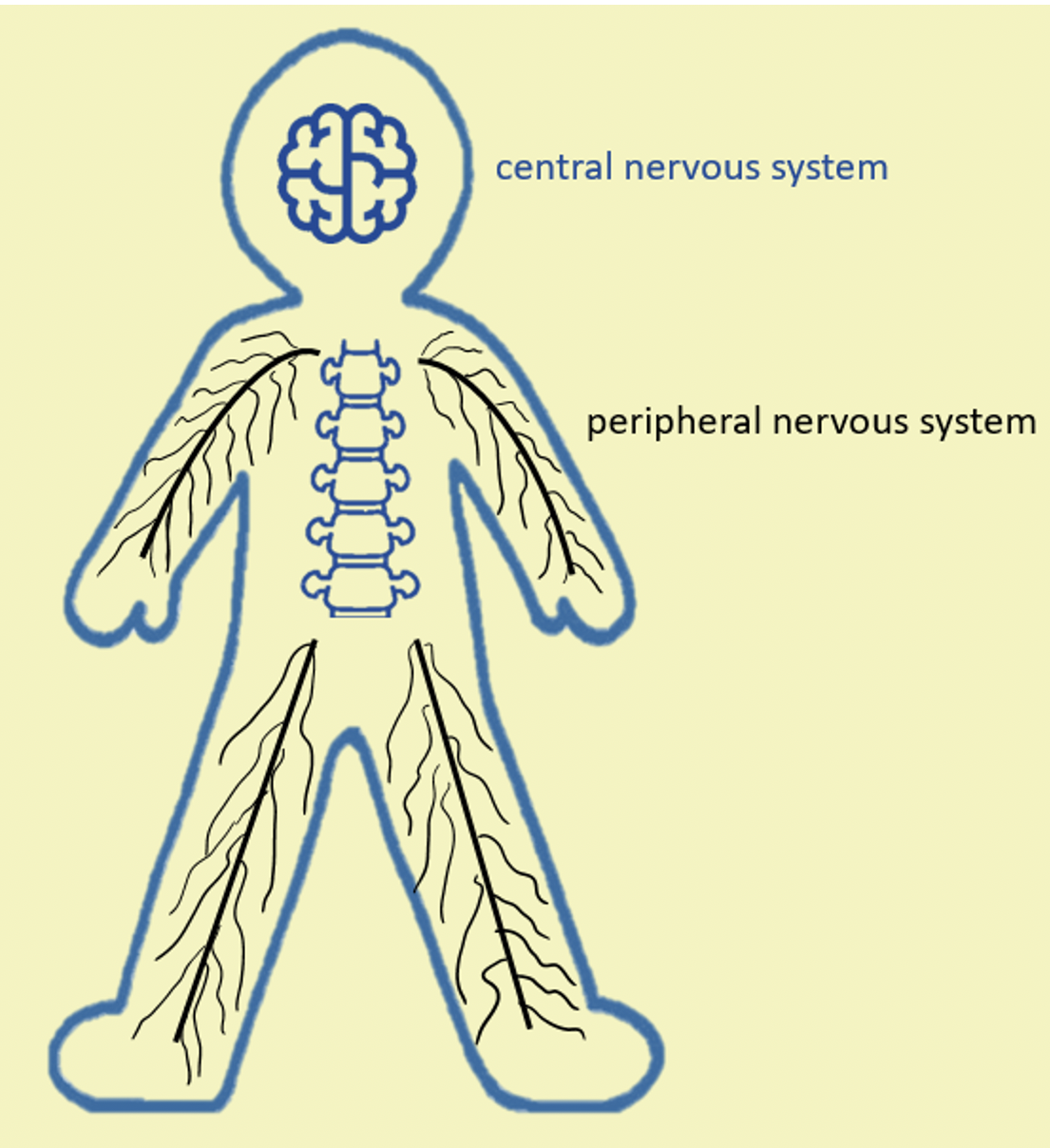We communicate with other people around us all the time. Whether it’s family, friends, classmates, teachers, or anyone else, we are always sharing information with each other. Similarly, your brain is constantly communicating with the rest of your body. Your brain controls so much—like movement, breathing, and how you’re feeling. But how can your brain communicate this with the rest of your body?
The brain is connected to the rest of the body through the nervous system. The nervous system is made up of nerves that help the brain send messages to the body. The nervous system can be divided into two parts: the central nervous system and the peripheral nervous system.
Let’s start by looking at the central nervous system. The central nervous system is made up of the brain and spinal cord. We already know that the brain is very important in controlling the rest of the body. The spinal cord runs down your spine and connects the central nervous system to the peripheral nervous system.
Next, let’s look at the peripheral nervous system. This part of the nervous system connects the central nervous system to the limbs and other organs. This helps the brain communicate with other areas of the body. The peripheral nervous system is divided even further into two parts.
The first part is the somatic nervous system. It has two main jobs. The first job is to connect the brain to muscles. To do this, special nerve cells called motor neurons transfer messages from the brain to muscles. This helps you to move your body, whether you are walking, writing, or tying your shoes. The second job of the somatic nervous system is to tell the brain sensory information. This can be what you touch or feel in the world around you. Nerve cells called sensory neurons carry this information. If you accidentally touch a hot plate, sensory neurons can help tell your brain to move your hand away.
The second part of the peripheral nervous system is the autonomic nervous system. The job of the autonomic nervous system is to control body functions that you are not aware of. This includes breathing, blood flow, and digestion. You don’t have to concentrate on every breath you are taking or control your blood flow by thinking about it thanks to the autonomic nervous system!
The different parts of the nervous system all work together by communicating to help you with everyday functions. Whether you are walking through your house or just simply breathing, your brain is helping the rest of your body.
According to LumenLearning (https://courses.lumenlearning.com/wm-biology2/chapter/the-central-and-peripheral-nervous-systems/), the nervous system has three main functions: sensory input, integration of data, and motor output. Sensory input is the body’s way of collecting information from your environment. Integration of data describes how the brain processes this information. Finally, motor output is when the brain sends signals back to the rest of the body with directions on what to do.
Communication is a key part of life—whether we are talking with others or within your body. The nervous system helps the brain stay connected with the rest of the body. What helps you stay connected with others in your own life?
Author: Grace Brolly
